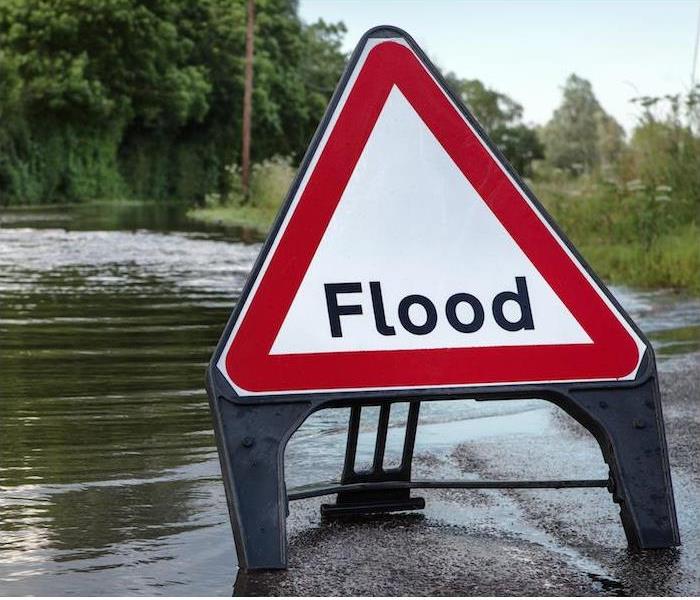Common Flooding Types & Causes | SERVPRO® of Northwest Bergen
4/12/2022 (Permalink)
 Regardless of the cause of the flooding, SERVPRO of Northwest Bergen has the team to help you recover from any disastrous event.
Regardless of the cause of the flooding, SERVPRO of Northwest Bergen has the team to help you recover from any disastrous event.
Flooding is the most prevalent natural disaster., impacting all 50 states and every territory in the United States. Though floods occur everywhere, there are distinctions in the forms and causes of flooding.
Floods are divided into three categories, each of which is triggered by one of four sources.
Flash floods occur when torrential rain falls or sits over a region, exceeding the ground’s capacity to hold moisture. Excess water rushes out, carrying with it everything, including trash cans, automobiles and all kinds of other debris.
River flooding means precisely what it sounds like. When a river’s banks are unable to absorb surplus water, the water flows over the edge, flooding the neighboring settlements and potentially causing significant damage.
Coastal floods are when storm surges or cyclonic activity force ocean or gulf levels to rise to flood levels near large bodies of water.
Heavy rainfall. Storms with excessive rainfall, or storms that sit and linger over a location for a lengthy period of time, may create flash floods and river flooding. Because of the abundance of concrete and asphalt in cities, rain floods are more common, because there isn’t enough soil to absorb all of the water. In Bergen County, there are over 22,000 homes that have a higher than a 25% probability of being flooded in the next 30 years. This accounts for 8% of all homes in the county! Flooding can create plenty of other problems for Bergen County residents.
Oceanic activity. Storm surges, hurricanes and high tides may all cause wave water levels to increase, inflicting havoc on coastal regions.
Dams and levees failing. The most well-known example is the disastrous levee breakdowns during Hurricane Katrina in 2005. The structures break when levees or dams breach, or when excess pressure exceeds the dam’s capacity to manage the surge of water behind it.
Snowmelts and ice dams. Snow and ice may accumulate throughout the winter in areas of the nation where heavy snow and extended freezing temperatures are prevalent, and when they melt, rivers of water pour through neighboring cities. Ice dams, also known as ice dams, arise when rivers get clogged by ice transported downstream, forcing the banks to overflow.
Regardless of the cause of the flooding, SERVPRO has the tools and teams to help your home or business recover from its disastrous effects. Contact us anytime when flooding or water damage makes a mess in your life.






 24/7 Emergency Service
24/7 Emergency Service